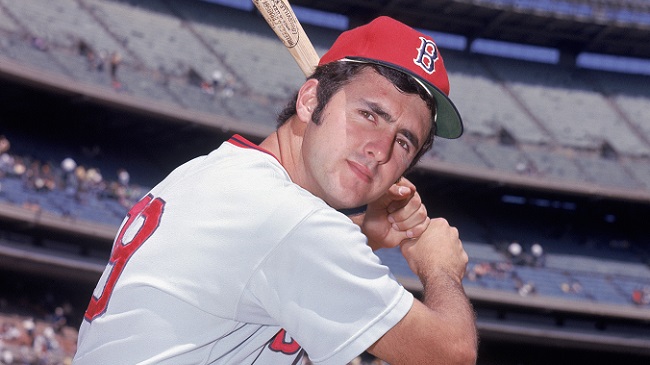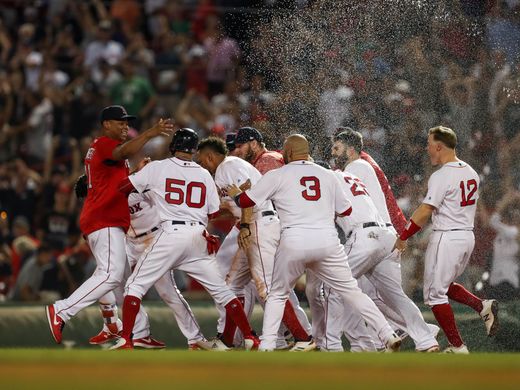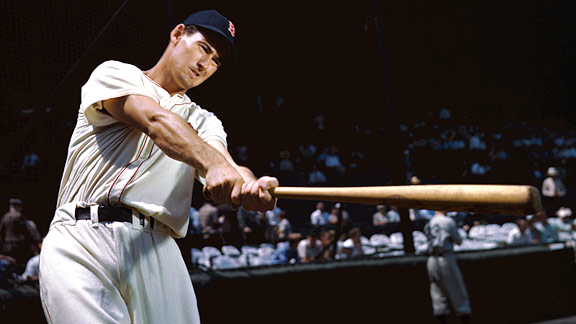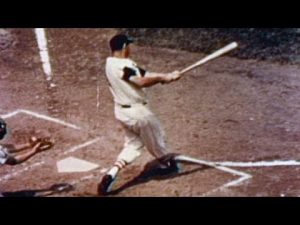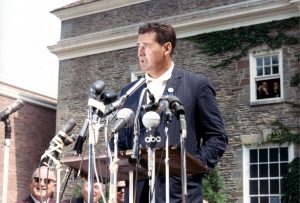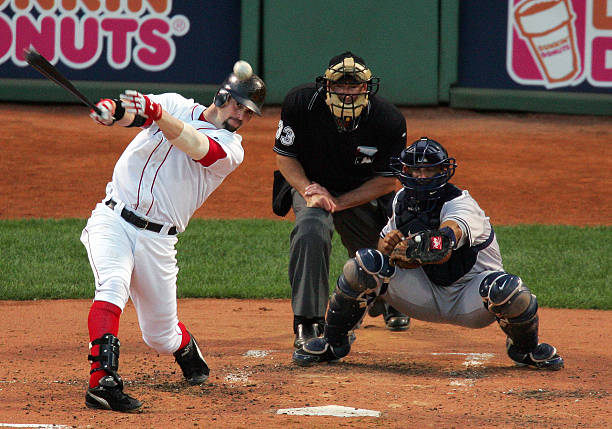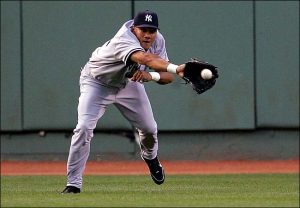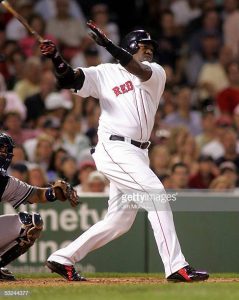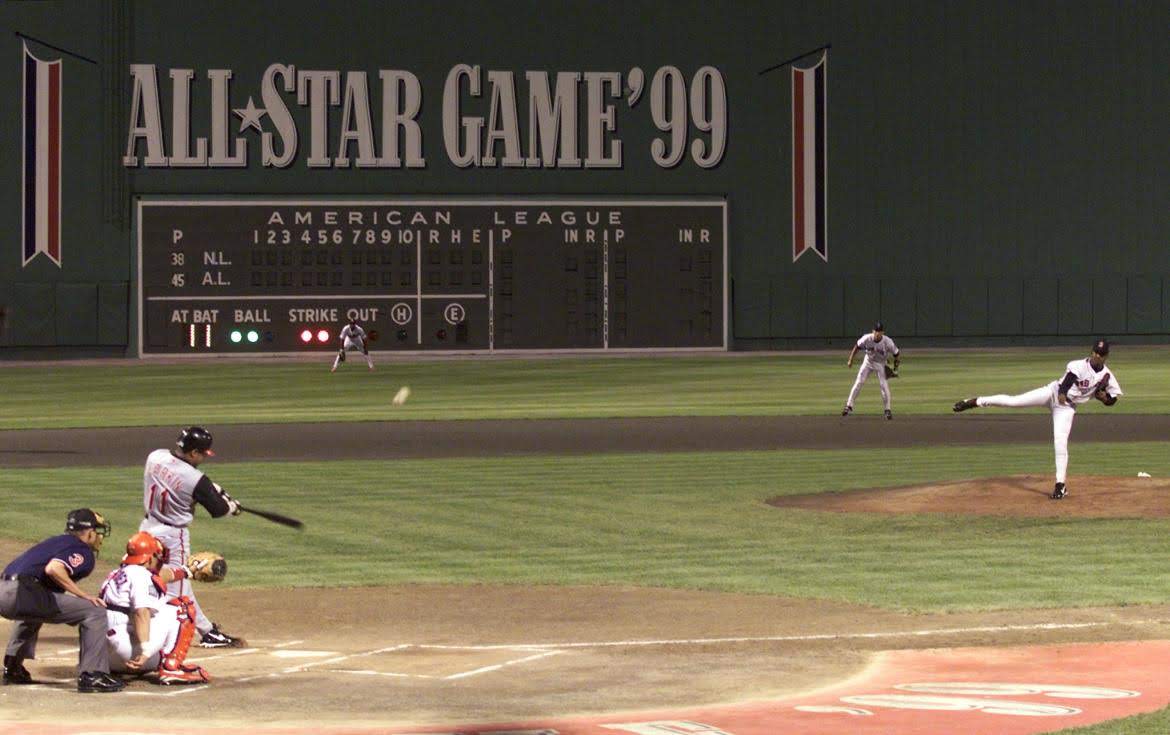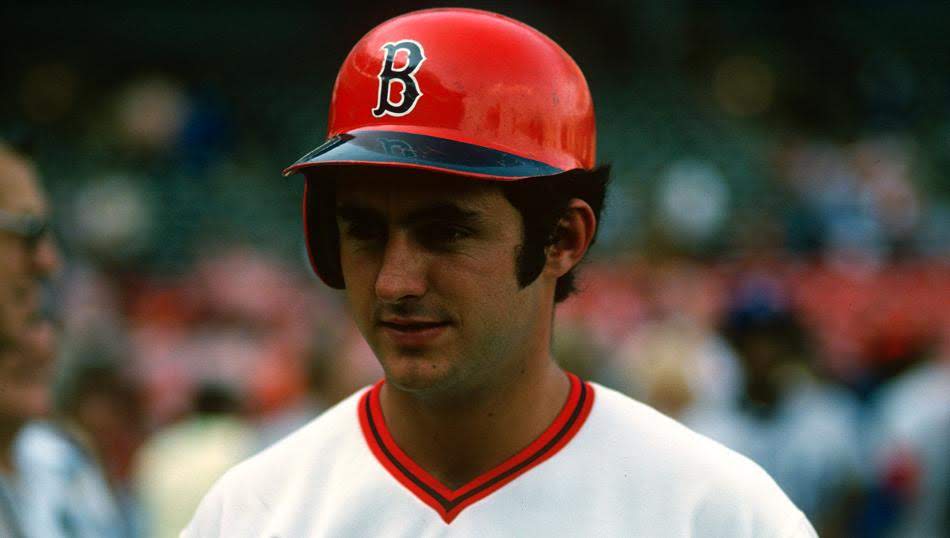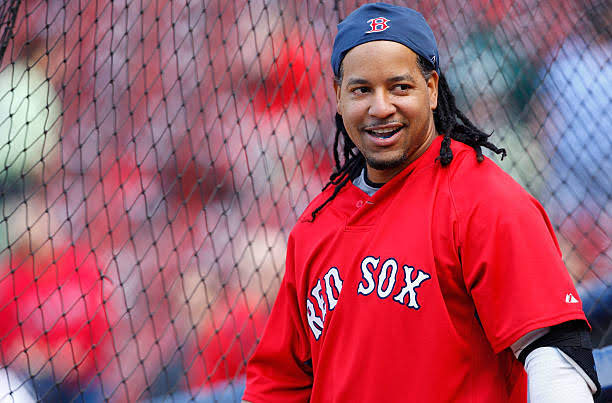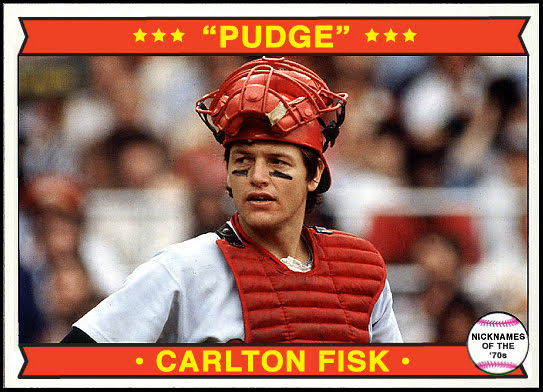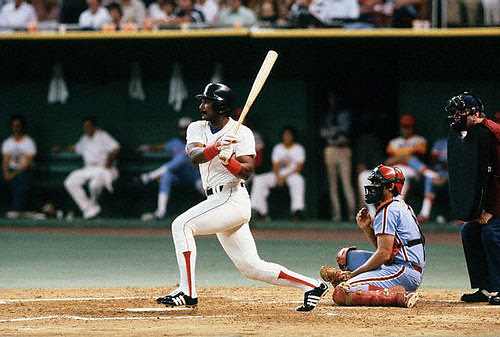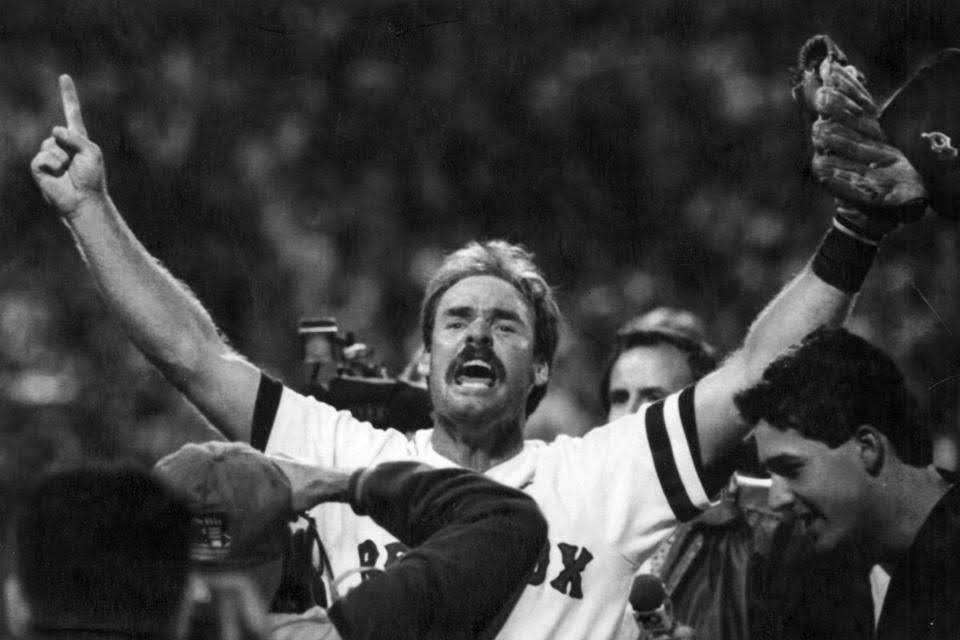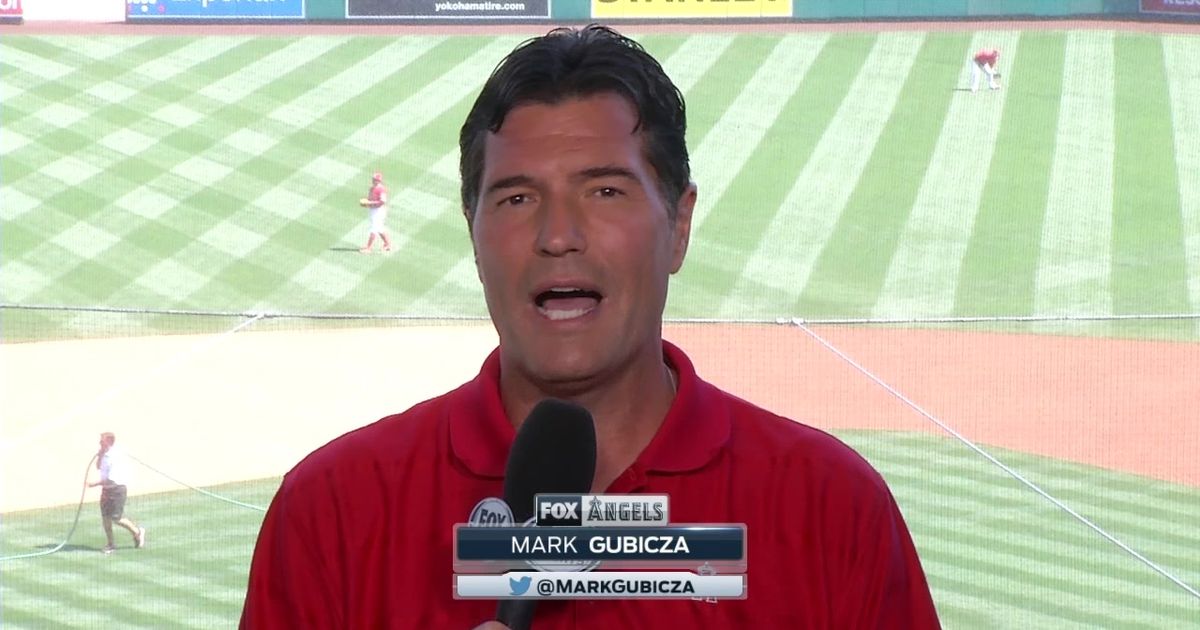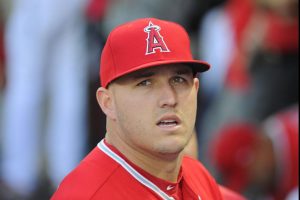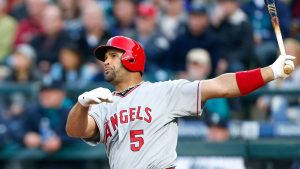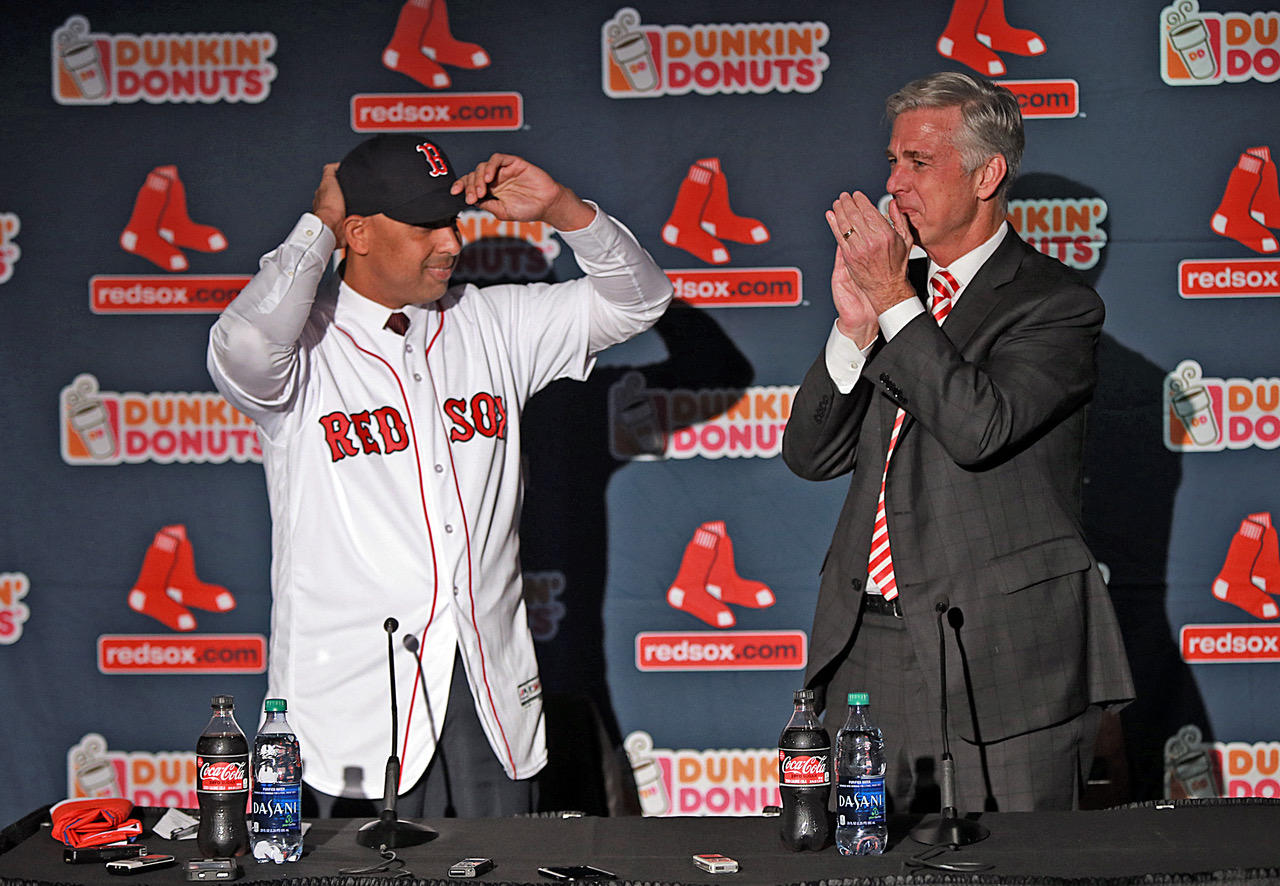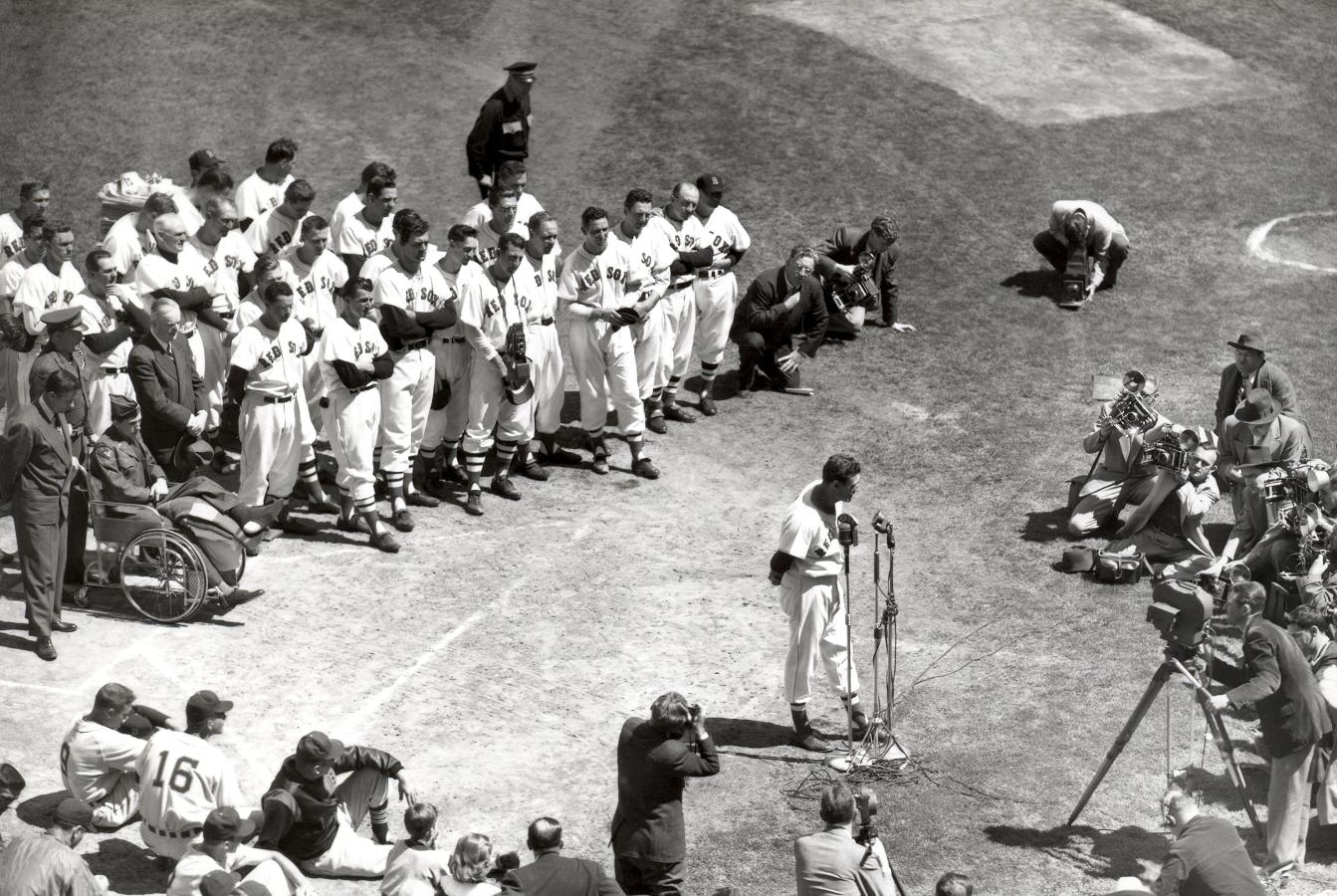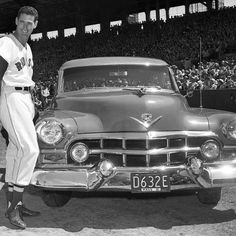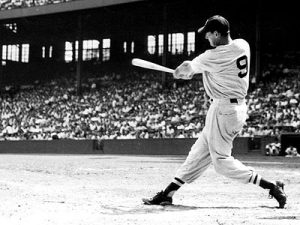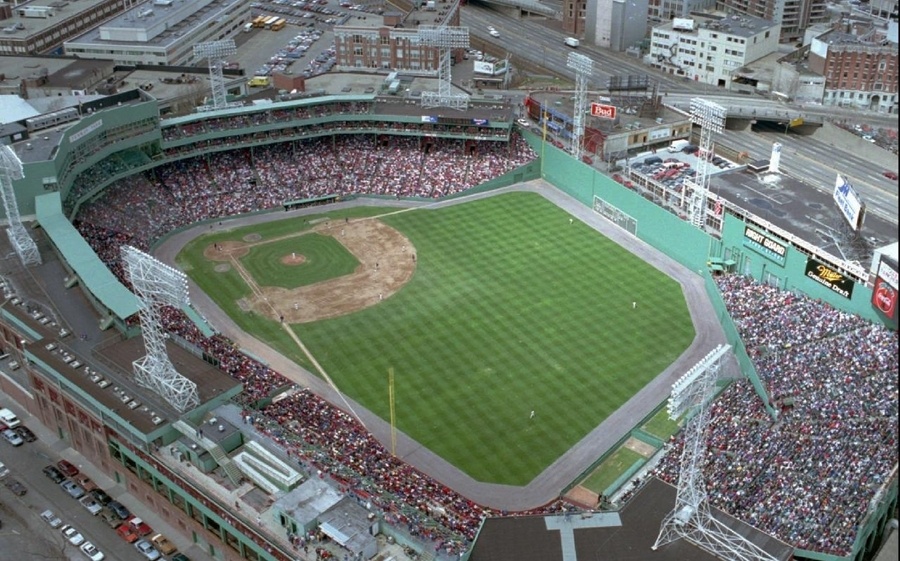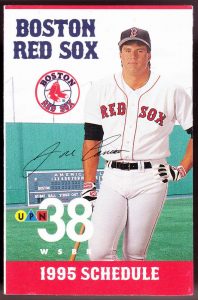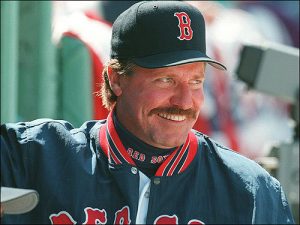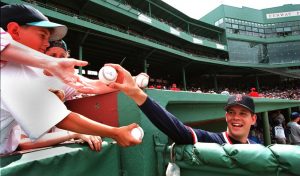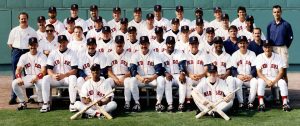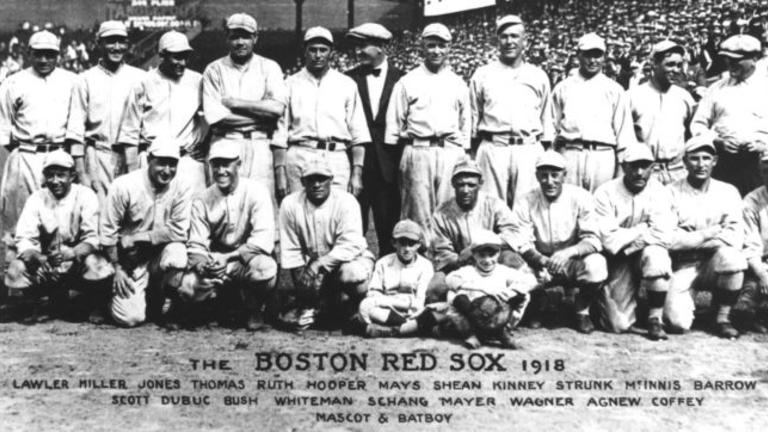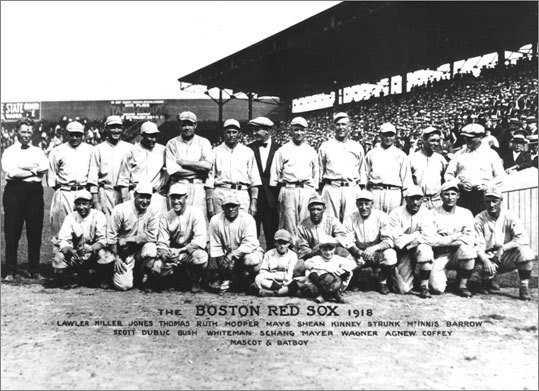I had the great pleasure and privilege of interviewing baseball great Fred Lynn the other day. Fred Lynn is a member of the College Baseball Hall of Fame, the Boston Red Sox Hall of Fame and the Ted Williams Hitters’ Hall of Fame. He is one of only two players ever to win the Most Valuable Player Award and the Rookie of the Year Award in the same season, a memorable moment for people that like betting on the MLB. Lynn made nine All-Star Games, won four Gold Glove Awards, a batting title, an ALCS MVP and an All-Star Game MVP. He truly is both a Red Sox great and a baseball great.
BSE: I hear you’ve been busy this year.
Fred Lynn: Yeah, it’s been a busy summer and spring. At the beginning of our season we never exactly know what’s going to happen. We did some things for the Red Sox, they have a Legends sky box and I go back there probably four times a year and in a normal year do maybe 15-16 games. This year there’s been all kinds of different things popping up, like representing the Red Sox at the Major League Baseball draft. Between that and golf tournaments and charity events I’ve been really busy.
BSE: What kinds of charities you been working with?
Fred Lynn: Well we have a charity here called the FACE Foundation in the San Diego area. What this organization does is it allows people that have physically catastrophic needs for their pets, meaning surgeries that could be life-threatening, and they can’t afford it. The FACE Foundation steps in and we have a lot of deals with vets in the area that will take care of it for these people. Most of the people that use the FACE Foundation are military. They save the pets basically on the spot and we’ve saved in the last four or five years like 2200 pets.
BSE: Wow, that is awesome!
Fred Lynn: It’s not like we’re trying to save cancer down the pike, this is immediate gratification. If we save somebody’s pet from being euthanized, then that’s a big deal.
BSE: Absolutely, I have been through that recently and that is a very good cause.
So, I would like to chat some about your playing career as well as the current Sox team. You were originally drafted by the Yankees in the third round out of high school and you decided not to go there, thank you.
Fred Lynn: I was going to go to college and we had told everybody that, that’s why I didn’t go until the third round. All the scouts said “we’re interested”, but I was going to USC.
BSE: And then at USC you actually went on a scholarship for football initially?
Fred Lynn: That’s correct. I was there with Lynn Swann, he and I were teammates. Back then freshmen couldn’t play varsity football; we had our own team, but we used to practice with varsity all the time, so like Sam Cunningham and that group of guys. It was very fulfilling, I love football, it was actually my first love above baseball. When the Trojans asked me to play football there I said “yeah, I’m in.” But, I was only about six feet tall, 170 pounds.
After my freshman baseball season, which we won the College World Series and I was on the All-Tournament team, and then I played for the US in the Pan Am games and I led that tournament in home runs. I hit a home run against Cuba in the gold medal game. I could see that I was one of the better amateur players in the country already as a freshman. With my size, I played corner and flanker in football and I was giving up 50 pounds to tackle these dudes, and that’s when I decided to switch over to baseball.
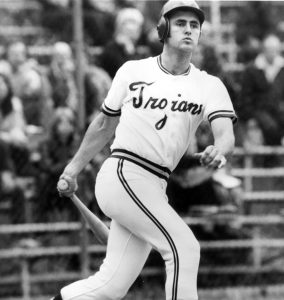
BSE: You mentioned you won the College World Series your freshman year, but you won all three years at USC, correct?
Fred Lynn: Yeah, that’s correct. We won five in a row and I was on the middle three.
BSE: And the Pan Am games are when you played in Japan?
Fred Lynn: No, we played in Cali, Colombia. If you don’t know, the Pan Am games are the Americas.
BSE: Right, haha.
Fred Lynn: Dominican Republic, Puerto Rico, Colombia and of course Cuba. So, our oldest player was 21 and when we played in the gold medal game against Cuba their youngest player was 22 and their oldest player was 38.
BSE: Oh wow.
Fred Lynn: Yeah, we lost 4-3. That was a great experience. The next year is when I went to Japan and played in the first collegiate All-Stars, USA vs Japanese college All-Stars. I was the MVP of that tournament.
BSE: What was it like playing over there in Japan at such a young age?
Fred Lynn: We all lost. We were all like 19 years old and I’d never had Asian food before. They tried to treat us right and we ate communally for the most part. They were serving us fish eye soup and these types of things, it was like “oh man.” Most guys weren’t willing to try those kinds of things so we were just dying. But it was a great experience, we played in the Japanese Major League stadiums, and it was a great experience because the fan base there. We were drawing 45-50,000 for a college game. It was great fun, I had a great time.
BSE: You were drafted by the Red Sox in the second round out of college and you came up through the minors with Jim Rice. You two were dubbed “The Gold Dust Twins.” How did that come about?
Fred Lynn: Yeah, that’s a good question, when you find out you let me know.
BSE: Haha, okay. Not sure where it originated huh?
Fred Lynn: No, I think one of the papers had some sort of contests. We started out in Double-A together, and I was only in Double-A for about a month and a half. Then we were in Triple-A and then we came up together in the big leagues. Actually, he came up the month before I did. We got off to a really good start; I don’t remember what paper, or who won. I don’t get the genesis of “Gold Dust twins” but all of a sudden, boom, it just popped up.
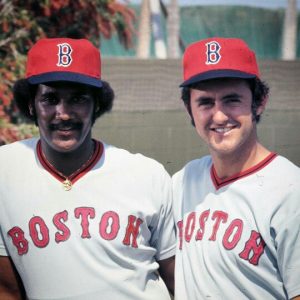
BSE: In ’74 when you came up in September you batted over .400, and that led into the ’75 season when you won the MVP, Rookie of the Year and Gold Glove. First ever to win MVP and Rookie of the Year in the same year, and still I kind of look at you as the only one since Ichiro was 27 and had played many professional seasons over in Japan. Do you kind of feel the same way?
Fred Lynn: A lot of my friends, and certainly my wife does. Can’t hold it against him personally. The rules say “everybody that comes to the United States is a rookie.” Okay, that’s kind of arrogant. But I guarantee you, he didn’t think of himself as a rookie when he came over here. There’s a big difference playing eight years of Major League Baseball over in Japan then entering at 21 or 22.
BSE: So you went on to play in the World Series as a rookie, what was that like?
Fred Lynn: To be honest with you, I had so much success as a collegian and won three national titles there. I actually won the Triple-A World Series between then too, so this is kind of the way things happened for me. I was used to playing on teams that won, I was not used to the other, so it was not unexpected for me. That’s kind of the way things were happening. We had a really good team obviously, and we beat the defending world champs in the Oakland A’s to get to the World Series. I wasn’t really surprised by it, I was just taking it in one day at a time as they say.
BSE: I guess that makes sense after winning three straight championships at USC.
Fred Lynn: Yeah, when you have won like that you expect it. You expect your teams to be good and you expect to play well. It’s unexpected when things don’t go right, so like when we lost game seven, that was unexpected. I had never been in a title game and lost, so that was a first for me. Having always been on the winning side, it was really a strange feeling for me on the other side.
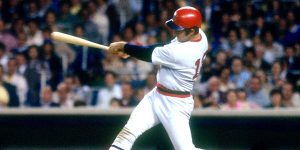
BSE: Do you think the outcome may have been different if Jim Rice hadn’t gotten hurt?
Fred Lynn: Oh there’s no question about it. Losing your number four hitter makes a tremendous difference, and unfortunately the guys that replaced Jimmy didn’t get a hit. I truly believe we would have beaten those guys in six games. We were really good, so I just don’t think they could have handled us.
BSE: In game six you hit a home run and also made a catch at the wall that you got injured on but kept playing. Did that affect you at all?
Fred Lynn: I actually didn’t make that catch, Ken Griffey hit that ball. That was when the Green Monster was a monster, it was concrete. What happened was, I’d lost all feeling from the waist down and I thought I’d broken my back to be honest. So when I started getting the feeling back in my lower extremities I stayed in the game. It definitely shook me up, there’s no question. I was fine mentally, but physically I could feel some things moving around down there. I had no long-lasting effects from that that I’m aware of. I had back issues during my career but I don’t know if it all stemmed from that one play.
BSE: At Tiger Stadium that year, you had a game where you hit three home runs, a triple, 16 total bases and 10 RBI. Do you look back at that as maybe the best game you ever played?
Fred Lynn: Well, it certainly was the most prodigious offensively because I didn’t even do that in Little League. Everything went right that particular night. Hall of Famers play their whole careers and never have a chance to do those things. The first three innings there were guys on base every time I came up and I went homer, homer, triple in three innings and I drove in seven. Those kinds of things, they just don’t happen; especially to rookies. I don’t remember any other rookies doing those types of things. It’s just kind of having a once in a lifetime game in your first season. That’s what kind of made the 1975 season so magical to myself and the team, things were happening that normally don’t happen to rookies.
BSE: Your 1975 season gets a lot of the attention, and rightfully so, but do you consider 1979 as maybe your best season?
Fred Lynn: I was a little bit bigger, a little bit stronger. I had lifted weights some that offseason and gained a little bit of muscle. That was the first time that I hit balls that I didn’t think I’d hit very well and they’d be home runs. I wasn’t a big guy, I used to have to square them up. That year, I turned into a power guy. I hit for average too, so yeah, it was a really good year. Both Jim and I were doing really well that year. We struggled some on the pitching side, but boy, we could definitely hit.
BSE: I look at the MVP voting and wonder how you finished fourth. Maybe it had something to do with the standings?
Fred Lynn: Yeah, a lot of people wonder about that. {Laughter}
BSE: So, after you left Boston, what was playing elsewhere like in comparison?
Fred Lynn: I was traded to California, and I grew up here but had played collegiately, not professionally. The major difference was the fan base. Boston fans in the seventies were very energetic, let’s put it that way. They knew the game, they came early and they stayed late. On the West Coast, they’d cruise on in during the second inning, leave during the seventh or eighth inning. If the teams doing well they come out, if not, well, okay we’ll go to the beach. The weather and the fan base were the two biggest things that were different. The intensity at Fenway Park was, boy you could cut it with a knife sometimes, especially if we were playing the Yankees. Out west, even if we were playing our rivals it didn’t have that same feel to me. I really missed that East Coast fan base.
BSE: You batted .347 with an OPS over 1.000 at Fenway Park, do you ever look back and wonder what would have happened had you not been traded and played longer here in Boston?
Fred Lynn: Well, I guarantee you, they wouldn’t have had to wait until 2004 to have us win. It would have happened. You figure, they got rid of Fisk, Burleson and myself all in the same year. You trade the guts of your defense, and then a lot of your offense too, when you find out a good reason you let me know. If you have those three guys, and then you get the pitching they started to get and nah, there’s no way we don’t win at some point in the eighties.
BSE: You stayed really consistent throughout the eighties. I was looking through your numbers and was kind of taken aback. You had 21 home runs in 1982, 22 in ’83 and then four straight years at 23. Then you hit 25 the following year, so it was a seven year stretch between 21 and 25.
Fred Lynn: Yeah, and I did it unfortunately in a limited number of games. You know, I had a lot of injuries that took me out of a lot of games. If you give me another 20 or 30 games each year than those numbers would be around 30 home runs a year. I just needed to be on the field, that’s all.
BSE: Do you have certain accomplishments your most proud of?
Fred Lynn: The All-Star Game home run ranks up there, not because of a personal thing, but back then the American League and the National League were two entirely separate entities. It was a real grudge match, the All-Star Game, and the National League had been beating us on a regular basis. After ’83, when we won that game, the American League has pretty much dominated the National League since that point. It was a real turning point for the American League and I’m glad I was a big part of that.

BSE: Who is the best player you ever saw?
Fred Lynn: Well, there’s two of them; Mays and Clemente. Those two guys were five-tool players. They did everything and they did it with flair. They had fun, you could see it. As a kid, those were the guys I really liked to watch play. Teams weren’t on the TV much back then but any chance I got to see those two I’d try and watch anything I could about those guys.
BSE: Who was the toughest pitcher you ever faced?
Fred Lynn: That’s a pretty long list. Any particular day you could bring up somebody from Triple-A and they could shut you out, so you just never know. On a consistent basis, Frank Tanana was always tough on me when he was with the California Angels. He and Ryan were number one and two in the league in strike outs and he just had my number. I didn’t pick him up well and if I did hit one on the screws someone would catch it. Some guys you just don’t see, and I didn’t see Frankie so it was a tough day every time I faced him.
BSE: Any pitchers in particular you did see really well?
Fred Lynn: I had a week against Bert Blyleven. He was with the Minnesota Twins and I was with Baltimore. We were playing them at their place in Minnesota and I hit two two-run homers off him. Then we got them at our place in Baltimore and I hit two three-run homers off him. I hit four homers and drove in ten off him in a week.
BSE: Wow, that’s impressive. Hall of Fame pitcher there.
Fred Lynn: Yeah, it works the other way there. I don’t care who he is, if he’s a Hall of Famer or not, sometimes you just see him. Maybe he’s making bad pitches or he catches you on a day your swinging a hot bat, but probably a little combination of both for Bert.
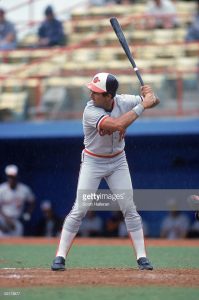
BSE: Moving on to the current Sox team. Have you been following them?
Fred Lynn: Oh yeah, I follow them extensively. I knew they were going to be a pretty good team but nobody knew the impact that JD Martinez was going to have on the club. He solidifies the lineup and he makes it tough to walk guys ahead of him, so they have to pitch to these guys. Now it’s made everybody around him better. Mookie is having a sensational season and you’d be hard-pressed to figure out which one of those two is more valuable. Is it Mookie leading off and setting the table and doing all those things, or is it JD solidifying the lineup in the heart of it? Right now it’s a flip of a coin.
But 50 games over .500? You’re in uncharted waters right there. This is crazy, they just won’t lose. You look at their lineup and say, “there’s a hole here, there’s a hole there,” it doesn’t seem to matter. Or if they have an injury, somebody steps in or they grab a guy like Pearce from Toronto and all of a sudden he’s hitting home runs like crazy. They have tremendous depth.
BSE: Seems that way. During the Yankees series when Steve Pearce hit four home runs I was calling him Jimmie Foxx reincarnated {laugh}.
Fred Lynn: Yeah, he’s got a short swing, and obviously Fenway is good to his type of swing. He pulls the ball, he kind of reminds me, he’s got a swing like Rico {Petrocelli}. A short, compact swing, perfect for Fenway. He hooked everything and that’s what Pearce does. You need some right-handed power at Fenway Park and now they have it. It’s a complete team, they’re leading the Major Leagues in every category. It’s all going to come down to the playoffs, and the front line guys have to perform well in the playoffs, because they’re going to play other teams who won 100 games.
BSE: Yeah, a team like the Astros is struggling right now but they have injuries, those guys are going to come back and they’ll be right back there.
Fred Lynn: Well, they have three front line pitchers. They have three number ones basically. They’re going to be tough in a short series, there’s no question. It’s just going to be, which star pitcher pitches the best. It always comes down to one key at bat; you get a key hit, maybe a two-out hit to drive in some runs. It’s intense. Playoff baseball is intense. Whoever wins the American League pennant is probably going to have to go through two teams that won 100 games. Now Oakland’s charging, and the National League doesn’t have anything like that. It’s going to be fun to watch.
BSE: What do you think of the Andrew Benintendi comparisons to yourself? There have been a lot of them made the last year or two.
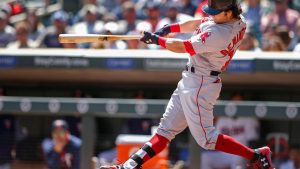
Fred Lynn: Obviously he’s left-handed and he’s got a real nice stroke when he hits. He has a different swing; he’s got a short, compact swing. My arms, I got funky arms, they’re really long. My swing was a little longer. Both have a fluid swing, but he lets the ball get in on him more. In my day we’d hit the ball in front of the plate more. So that’s what makes him tough; he’s strong, compact and he can move the ball the other way. If he sees the shift on he’ll hit the ball the other way, which is smart. Those comparisons, I get it, sort of. But to me, in my eye, my swing was longer than his, but it was similar. He’s his own guy, he’s going to make it on his own merit and he’s having a super year too.
BSE: Speaking of shifts; what do you think of all the shifting in baseball nowadays?
Fred Lynn: Well, I can remember shortstops going to play me behind second base, {chuckles} I’d just hit it to short. I mean, there’s ways around it. If you’re not a power hitter…bunt! Get on base, the onus is on you. They’re going to play you this way until you make an adjustment, and if you keep hitting the ball on the screws and making outs then you need to make an adjustment and start going the other way. If you don’t know how to do it, then bunt, but you need to get those guys back where they belong and the only way to do it is to start going the other way.
BSE: Which you knew how to do, I’m surprised they actually shifted.
Fred Lynn: Yeah, I came to Fenway Park and I pulled the ball, I never hit the ball to left field. And I saw that wall and I said, “wait a minute.” So I just changed my swing just to make sure I could do that. Nobody taught me how to do it, I just kind of figured it out. Some guys are pretty stone-headed and they won’t change. Well, if you won’t change you’re going to hit .210.
BSE: Well, that’s all the questions I have for you. I really appreciate you taking the time to do this with me.
